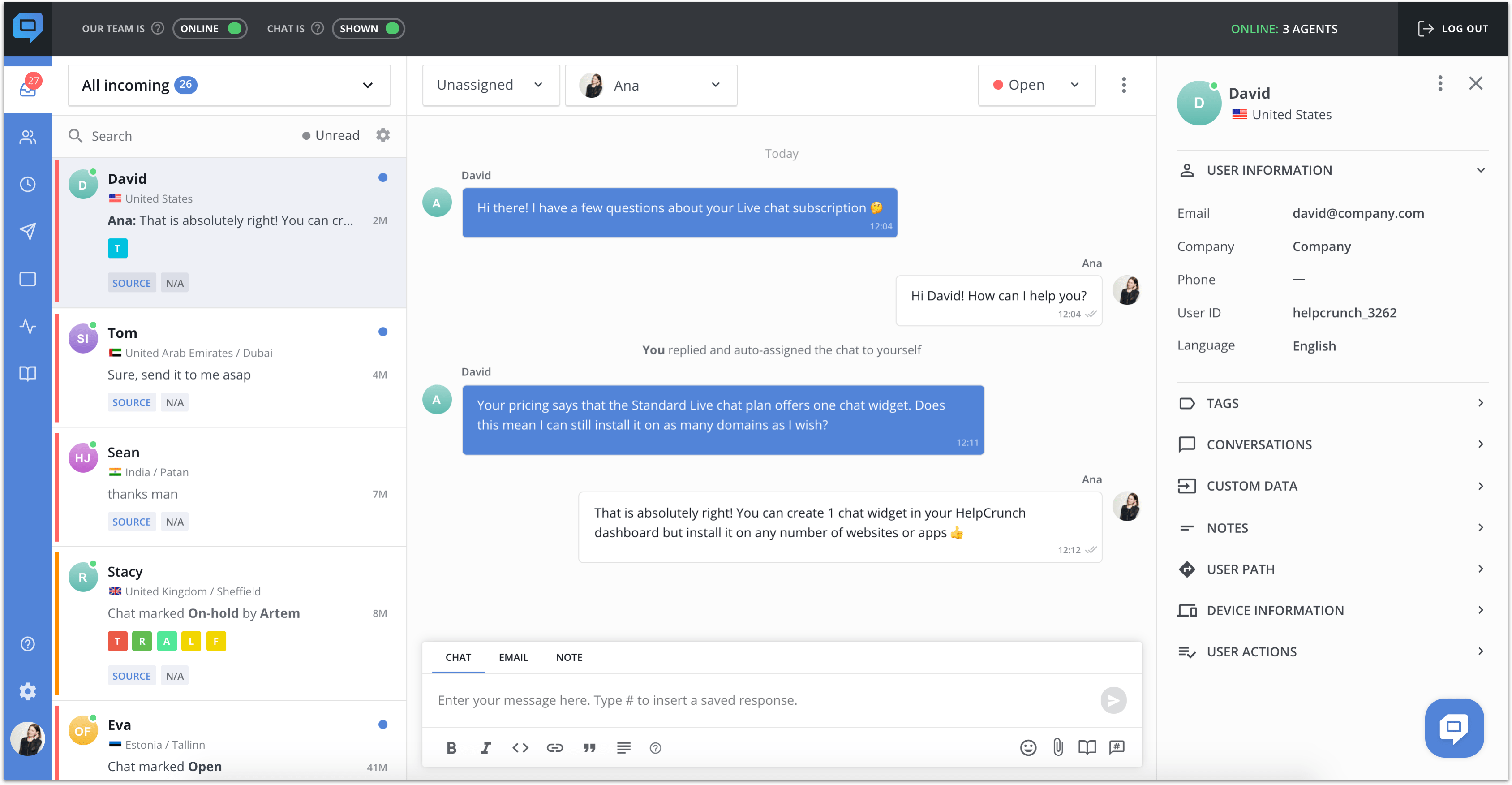How to Prevent Customer Service Burnout: 7 Efficient Strategies
Working with different clients day by day is emotionally difficult. Luckily, this fatigue can be managed. Learn these 7 insightful strategies on how to knock customer service burnout out to your best advantage.
Written by Olesia Melnichenko

Client-facing jobs are no picnic. It usually takes considerable struggle for a customer support team to adjust to a variety of clients’ tempers and demands. But communication problems are just one of the reasons that can lead to customer service burnout. Other causes may include heavy workload, juggling work and personal lives, poor management, and little participation in decision-making processes.
Statistics show that more than 30% of clients are more likely to switch to another brand because of a rude and unresponsive customer support rep. With a variety of complex tickets piling up, customer support reps may end up working through a hard backlog. As a result, handling some existing queries and dealing with new ones bring about lower productivity, increased errors, and a higher turnover rate.
All in all, the end goal should always remain unchanged: achieving customer satisfaction and retention. And in order to get the hang of it, it’s essential that a customer support team stays fresh and bright-eyed. After all, you want both to deliver the best service every day and prevent everlasting depression. Take advantage of these 7 proven strategies that will help increase agent productivity, beat back the burnout and crush it for your clients.
1. Upgrade your customer service tools
Today’s market is brimming with a variety of helpful solutions that make support agents’ lives much easier. They help reach success for the business. Moving to an omnichannel customer communication platform can improve workplace efficiency and productivity significantly. It’ll take less time for customer support reps to switch between chats, emails, and self-service resources. So, the number of possible errors will be decreased because all the data is captured at once. Plus, support reps can save their messages for further use instead of answering similar inquiries every time.

Moreover, investing in such types of customer service solutions like live chat or chatbots can, for instance, unload customer support agents and allow them to multitask hands down.
Such an approach makes it also possible to solve more complex issues while bots handle minor ones. At the end of the day, customer support reps become more productive, which leads to career satisfaction.
2. Keep the work/life balance
Burnout usually results from chronic work stress. Once you turn your computer off and head for home, put that working routine out of your head. You can get back to it first thing in the morning. Sure, there can be cases when you have to stay at the office or work from home. But if solving clients’ issues gets into your habit, you’re in danger of facing massive customer support burnout.
Consider removing message or call notifications, and mute your team communication app during off-hours. Plus, leaving your notebook on a working table may do a trick: you won’t be able to write something down during your time-off, and will let yourself feel less busy.
3. Encourage regular break times during the day
Depending on a customer service squad and its demands, taking a short break outside of lunchtime can feel like unaffordable luxury. However, brief diversions from work can help us stay focused on tasks. By having a time-out, customer support agents can replenish their energy and drive to work, which is decreased by burnout.
It’s of paramount importance to know when to take such breaks. A conversation with an annoyed client and a fatigue feeling are perfect triggers. Usually, customer communication software makes it possible to stop for a second so that an employee can blow off steam. In a team inbox tool, like HelpCrunch, there’s an opportunity to change a chat status from open to pending to on hold for a bit when a conversation isn’t on. Moreover, take a break after a long meet-up, a phone call, or a completed task. This way, it’s easier to avoid vexation and strain.
Another useful tactic here is to go on breaks that incite positive emotions. Everything from a short walk and having a fruit snack to talking to a coworker can do wonders. To put it simply, any abstract activity that can take the mind off of work. If you’re a team leader, encourage your coworkers to do that and show that short breaks are more than acceptable.
4. Schedule recurrent one-on-one meetings
Some companies follow strict rules and their policies are set in stone. In such a strenuous environment, employees may not have a chance or even courage to speak up. This often translates into their work, emotions and unsaid thoughts add up, and burnout is inevitable. To avoid customer service depression, go for regular one-on-one meet-ups.
In-person talks can help break the ice between a team leader and an employee. You can discuss workload, existing pain points, something that a support rep struggles with day by day. Besides, encourage staff to write ideas down and prioritize them before the meeting. This input is a perfect chance for a manager to set expectations and understand the reality to prevent major issues.
Don’t forget about providing instant feedback to your colleagues. No matter whether it’s positive or negative, it can still go a long way. However, if the word ‘feedback’ provokes stress in the team, try to replace it with ‘guidance’ or any other less fearsome word.
5. Introduce collaboration practices
Dealing with employee burnout and building bridges within a company may be daunting. But not when you foster your staff to team up with other colleagues. It may be efficient when a complex issue pops up or a disappointed customer comes. Actually, customer support is a team sport: collaboration reduces ticket resolution time, boosts the chance of a positive result, and disperses stress.
Discussing specific KPIs and motivating customer support reps can be also beneficial. For instance, if they answer 500 chats in a month or maintain a customer satisfaction rate around 95, they can be rewarded. KPIs may vary from a company to a company and seem hard-hitting. But if a team works together, it’ll be a snap and customer service burnout won’t get in the way.
Improved collaboration in a customer support department makes collective knowledge available and a team becomes a stronger entity. Besides, if service reps are in sync with other squads, it will provoke a sense of belonging and give enhanced motivation to work together. Though it may not completely help battle burnouts, it will take the working climate up a notch and make it easier to overcome problems in the future.
6. Give customer support agents more power
Who wants to work like a robot following just the same template over and over again? Sure thing, it’ll lead to boredom and frustration. It happens that a problem can have several solutions, so it isn’t always right to do as written. Customer support reps should be given more control over their interactions to show their own creativity in problem-solving.
Being watched constantly is the worst thing that can happen in a team. And if an employee sticks to a rigid live chat script, for instance, it’s impossible to bring personality to the role, especially to customer support. Moreover, finding new, fun challenges to add to a daily routine can help combat monotony. That’s why coming up with some unusual solutions may be of use. Encourage out-of-the-box thinking and customer service anxiety won’t be around the corner.
7. Support your customer service team
Service agents are the middlemen interacting with all kinds of customers. They end up bearing the burden of vexation off and on. That’s why customer support work may seem thankless at times.
A lack of appreciation may even backfire and staff may feel unvalued. And that often is the reason for customer service stress. However, several useful techniques can help avoid it:
- Small gestures of appreciation can have a positive impact on many aspects of business, such as staff productivity and morale: say a simple ‘thank you’ phrase, write a cute note on the occasion of your colleague’s birthday, or even leave a healthy snack on a table for cheering up;
- Practicing all-hands support with different departments is an excellent way for a company to gain firsthand experience and understand all the internal processes: for instance, sales reps or developers can be helpful in fielding customer’s questions in live chat as they feel real client’s pain and can come up with faster problem-solving;
- Celebrate milestones and sing each other praises when a company hits, let’s say, $500K in sales. Create regular employee awards, such as ‘Best Team Player’ or ‘Going The Extra Mile’. Plus, include some useful gift cards or any other pleasant treat: an employee will appreciate it for sure.
Wrap it up
When it comes to customer service burnout there’s one more thing to bear in mind: team spirit. Hold team-building activities, create a friendly atmosphere within the company, and arrange regular meetings where you can share both positive and negative feedback. And factor in creativity if need be.
Drawing the line between work and home also matters. Give yourself healthy breaks during the day and leave some operating tasks at work: these are down-to-earth methods that can motivate everyone for the next task.
Customer service burnout may be also knocked out by switching over to multi-channel customer communication software, like HelpCrunch. This feature-packed platform combines everything support agents may need for delivering the best service yet without spending much trouble. Set up auto messages, reduce support workload by developing a self-service integrated knowledge base, and track team performance. Start a free trial with HelpCrunch to take all these specs for a spin.






